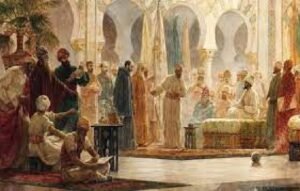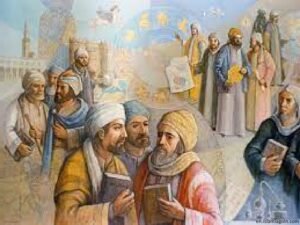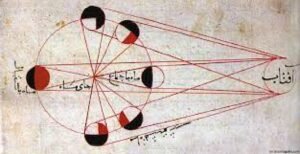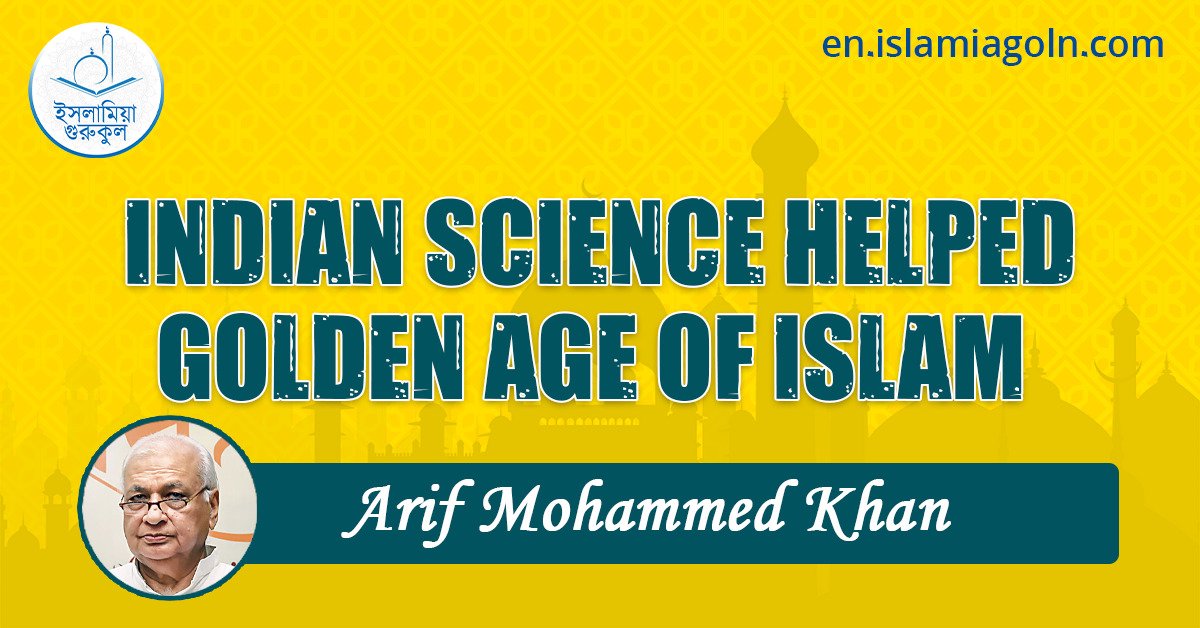Today’s topic of discussion: INDIAN SCIENCE HELPED GOLDEN AGE OF ISLAM

INDIAN SCIENCE HELPED GOLDEN AGE OF ISLAM
History and legend both describe the first 400 years of Abbasid rule, from approximately 750 to 1150, as the Golden Age of Islam. Great military victories, booming international trade, and agricultural growth led to all round prosperity and an elite luxurious living that gave rise to fables like ‘Thousand and One Night’ and prompted the historian Khatib to declare that ‘Baghdad has become a city with no peer throughout the world’.
But the real distinction of Baghdad, which earned universal admiration, was the unrivalled intellectual activity in all fields: science, mathematics, technology, veterinary sciences, agronomy and literature including biography, history and linguistics.
The patronage of the Caliphs attracted academics and scientists of diverse nationalities. They pursued their studies in an environment free from religious prejudice and orthodoxy.

It is interesting to recall that the royal physician Bakhtishu, a Christian, when invited by Caliph Mansoor to embrace Islam, retorted that he preferred the company of his fathers, be they in Heaven or Hell. Thereafter, Mansoor never broached the subject with him and the Bakhtishu family provided leading physicians and medical teachers for seven generations.
The general observation about the scientific achievements of this period is that Arabs undertook translation of Greek texts that had disappeared from academic reach after the Byzantine Emperor Justinian closed down the 900-year-old Academy of Plato in 529 and persecuted the pagan, that is non-Christian, scientists. This knowledge was transferred to Europe via the Arabs, only for Europe to claim it as its own heritage.

While the translation of Greek texts began in the ninth century, the Arabs embarked upon the translation of Sanskrit texts from India much before According to Tabqatul Umam, a delegation from India came to Baghdad in 771, some 250 years after the death of Aryabhatta. This delegation consisted of an astronomer called Kanaka, who carried with him a small library including a book titled Surya Siddhanta and works of Aryabhatta and Brahmagupta. According to the Arab historian Al-Qift, the Caliph was amazed by the brilliance of Indian texts. On his order these works were translated into Arabic by Al-Fazari, who subsequently emerged as the first Arab astronomer of great repute.
Over time this Arabic version gained fame under the title of Sindhind and became popular as a text of mathematics and astronomy all over the Muslim world including Spain, from where it travelled to Europe and was translated into Latin in 1126. This work revolutionised the study of mathematics and sciences and replaced the cumbersome Roman numerals. It is interesting to note that while Europe called the new system as Arab numerals, the Arabs called them Hindsa (Indian numerals), giving recognition where it was due.

The other significant area influenced by Indian ethos and morality was adab, that is, the embodiment of sensible counsel in the form of fables. The literary masterpiece of Ibn Muqaffa, Kalila wa Dimna is based on the stories of Panchatantra and Mahabharata, and is considered a classic of early Arabic prose We find mention of translations of Varahmihir, Brihat Jatak, Krishna Avtar and Vishnu Purana in Kitabul Hind by Al-Biruni, the brilliant historian who came with Mahmud of Ghazni’s armies and stayed behind to live with Brahmins, learn Sanskrit and write his extraordinary work on India.
The long list of Sanskrit manuscripts that were translated into Arabic and cataloged in detail by the Arab historian Ibn Nadeem in his classic Fehrist is an acknowledgment of the contribution that Indian sciences made in building the Golden Age of Islam.
See more:

3 thoughts on “INDIAN SCIENCE HELPED GOLDEN AGE OF ISLAM”